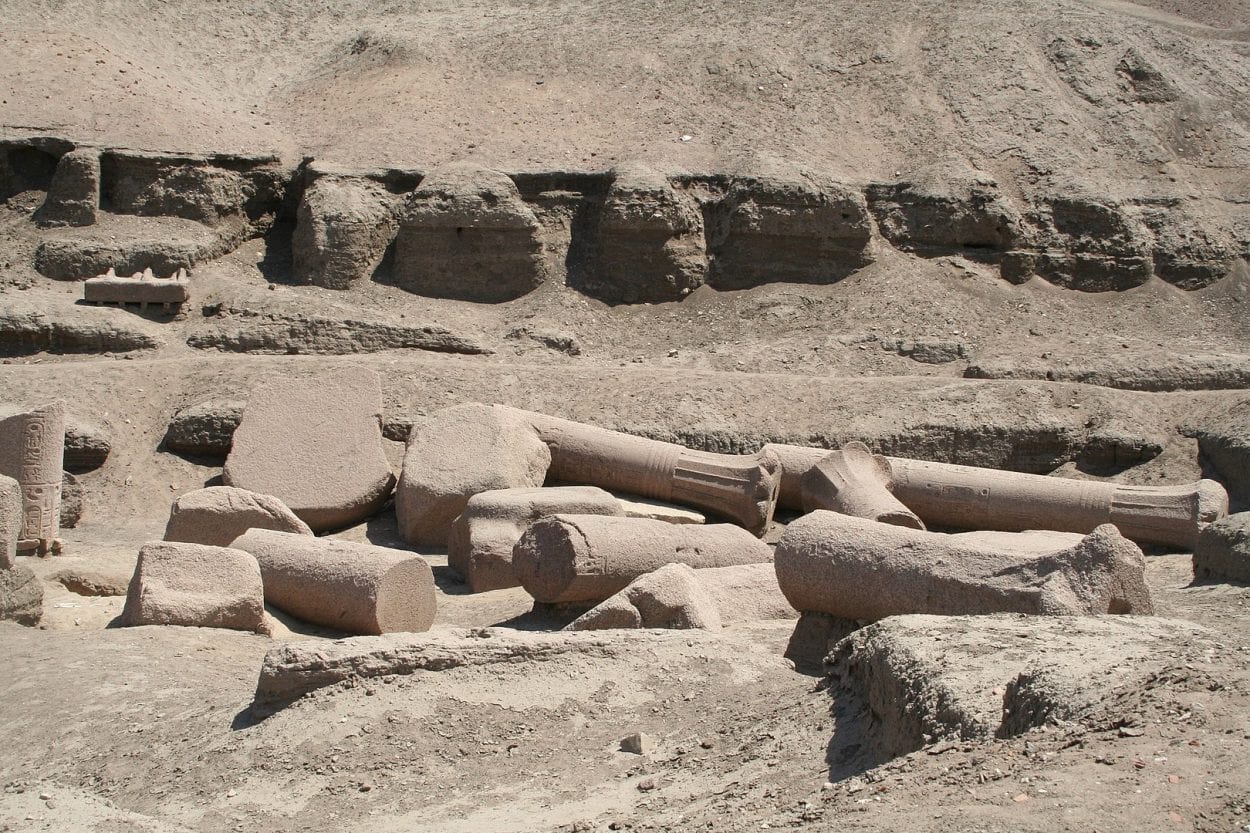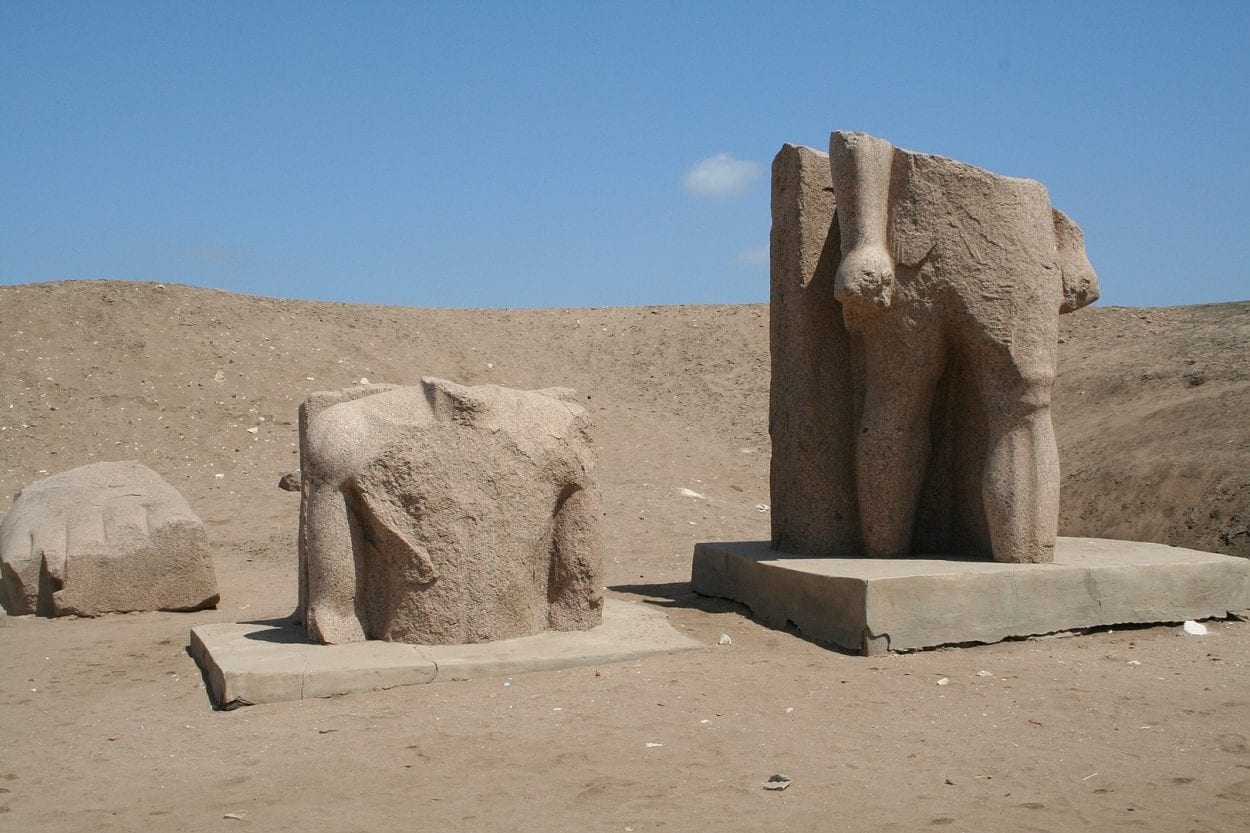Tanis is an archaeological site and ancient Egyptian city on the Tanitic branch of the Nile River delta near the modern-day town of Ṣān al-Ḥajar al-Qibliyyah.
Tanis was built as the capital of the 14th nome of Lower Egypt, with the earliest Tanite buildings dating from the 21st Dynasty, the first Dynasty of the Third Intermediate Period, lasting from 1069 BC to 945 BC.
Many of the materials used to construct the city were repurposed masonry and stone from nearby population centres such as the former capital of Pi-Ramesses (Per Ramessu). Pi-Ramesses was built by the Nineteenth Dynasty Pharaoh Ramesses II (1279–1213 BC) at Qantir, near the old site of Avaris. The city was abandoned when the Pelusiac branch of the Nile began to silt up in 1060 BC and its harbour consequently becoming unusable.
The Twenty-first Dynasty Pharaohs dismantled Pi-Ramesses and transported the Ramesside temples, obelisks, stelae, statues and thousands of blocks of stone masonry 100 km north-west of Pi-Ramesses to their new capital at Tanis.

When archaeologists first discovered Tanis, the large number of monuments bearing the cartouches of Ramesses II led them to believe that Tanis and Pi-Ramesses were, in fact, the same. It wasn’t until the rediscovery of Pi-Ramesses (Qantir) and Avaris (Tell el-Dab’a) that archaeologists were able to correctly identify Tanis and reveal the monumental task of transporting the materials from one city to another over such a vast distance.
Excavations have determined that Tanis was organised into distinct districts, with the most notable being a temple district encircled by a large brick wall. The temple district centres around the Great Temple of Amun, and also contains the Temple of Khonsu-Neferhotep, a royal necropolis (which contains three pharaohs of the 21st and 22nd Dynasties — Psusennes I, Amenemope and Shoshenq II), and a sacred lake.

Large areas of the wider city area are yet to be excavated, but south of the temple district is a large residential area, the Temple of Amenemopet, the Temple of Mut and Khonsu and a non-elite cemetery.
Tanis lost its status of royal residence and begun to decline under the reign of Shabaka (also called Sabacon), the Kushite founder of the 25th dynasty who shifted the Royal capital to Memphis.
Header Image Credit : Einsamer Schütze – CC BY-SA 3.0





